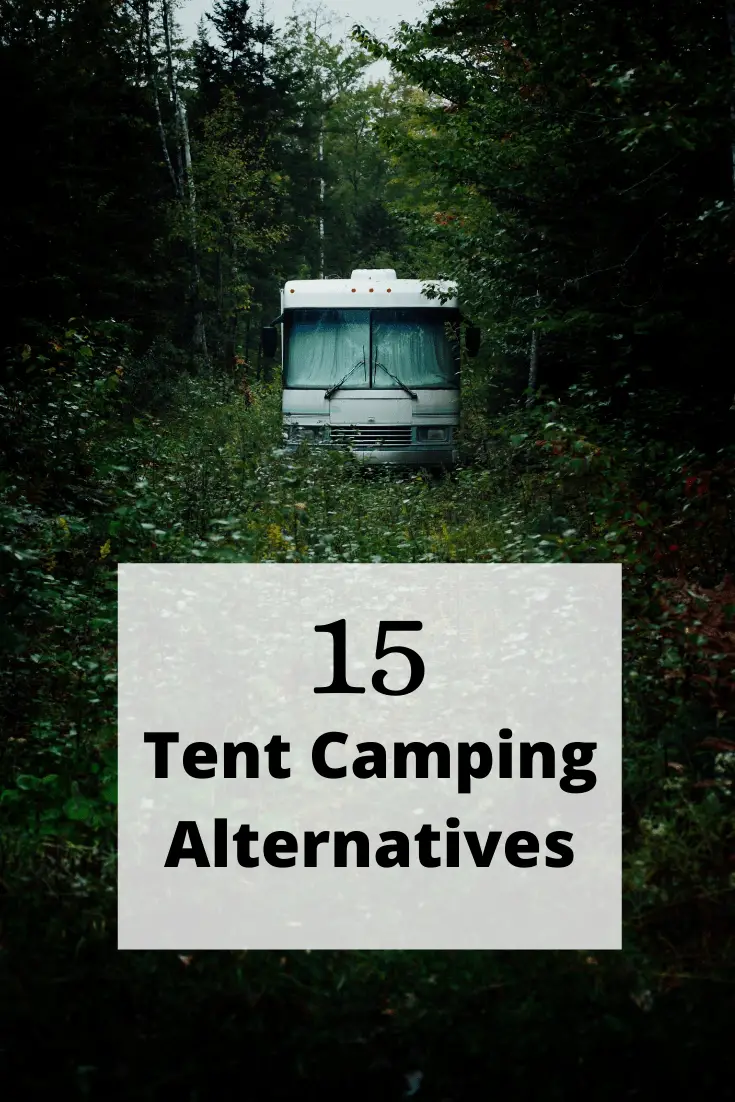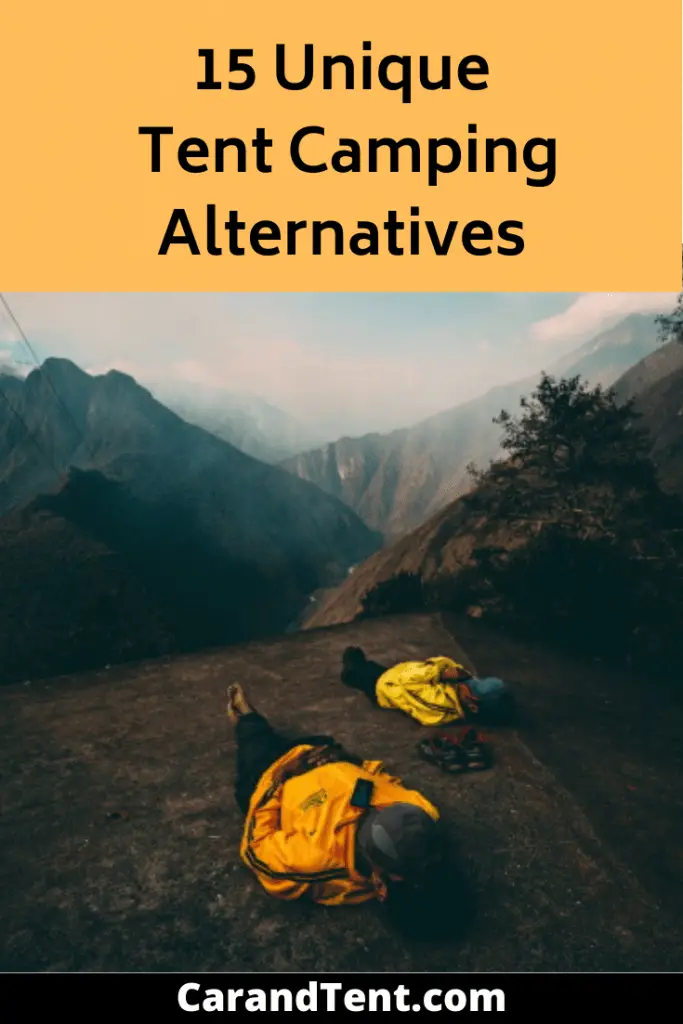Tent camping can be a lot of fun but it isn’t the only way to go camping. Check out these 15 tent camping alternatives!
Table of Contents
Fire Tower Camping
Fire tower camping offers some of the best views imaginable. In fact, some of these towers extend up to 50 feet up into the sky.
On top of this, these sites are often just as inexpensive as regular tent camping sites. You can often get them for as little as $30.00 a night. This being said, some will cost you upwards of $75.00 a night. The price will vary based on the site and the amenities that it has to offer.
I first learned about this type of camping from a magazine and upon further research, was shocked to find out just how many places offer fire tower camping in the U.S. Unfortunately, these towers are mostly located out west so you may have trouble accessing them.
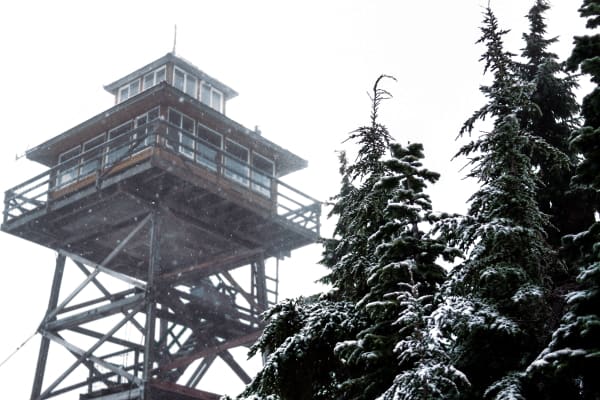
What’s nice about fire tower camping is that these campsites actually let you camp inside of decommissioned fire towers. Sometimes these old fire towers will be empty inside and in other instances, they’ll have beds and even kitchens that you can use. For obvious reasons, you won’t find a bathroom inside of them, but many will have outhouse facilities nearby. You probably won’t have electricity either, but this will depend on the tower.
Some of these fire towers will have road access so you’ll be able to drive right up to the tower. In other cases, you may have to backpack your way to the fire tower.
If you’re afraid of heights and are worried you won’t be able to take advantage of this kind of camping, you could also look into fire tower cabins. These cabins don’t demand that you climb steps to get to them. Instead, they offer great views by simply being built on top of a mountain.
Treehouse Camping
Treehouse camping is a niche style of camping that is offered at select private campgrounds. It may also be offered at some public campgrounds, but I’ve yet to find one.
Some treehouses provide their campers with great views of the surrounding areas while others offer the experience of sleeping within the treetops. If you’ve ever seen Robin Hood, (The one Kevin Cosner starred in.), it’s kind of like that but without the intense battles.
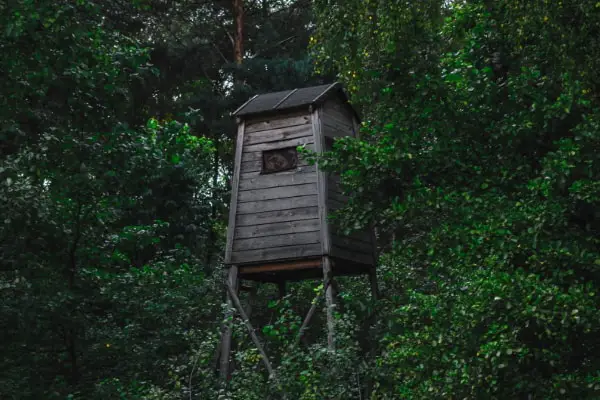
The cost of treehouse camping can vary dramatically. This is usually based on the location of the treehouse, the size of the treehouse, and the amenities that are offered by the treehouse as well as the campground it’s located in.
One of the nice things about treehouse camping is that it can be as rustic or as fancy as you want it to be. Some treehouses have all the amenities of home while others will be similar to what you might find in a kid’s treehouse in the back of someone’s home. Either way, you’ll have interesting views and a unique camping experience without having to worry about pitching a tent.
Pod Camping
Over the past few years, pod campers have earned their own little niche within the camping world. This type of camping is done within the comfort of a small egg-shaped structure. These structures can vary significantly so the definition of pod camping can be somewhat obscure.
For some people, pod camping involves strapping a small pod to the hitch carrier of their vehicle. This pod can be taken virtually anywhere and opens up so that you could sleep in it. While you’re not sleeping in it, it could be used as storage.
For other people, pod camping consists of climbing into a pod that is suspended from a tree. This pod can be just large enough to sleep in, or it could have all the amenities of a large treehouse camper. These pods are geared more towards people who are looking to go glamping in the sky.
Other pod campers are egg-shaped structures that are dropped into unique places and again, they can vary in size. Typically, the larger the pod, the more amenities you’ll find within them. These campers might be dropped onto a beach or on top of a mountain. They’ll provide a safe and secure camping space that is more comfortable than sleeping in a tent, and you won’t have to worry about carrying them to your destination.
The advantage of pod campers is that they are particularly wind resistant. This is the reason they do so well in windy areas like up in the trees, on top of mountains, on beaches, or even cruising along behind a person’s vehicle.
Greenhouse Camping
Greenhouse camping is definitely a niche style of camping. This type of camping involves using a person’s greenhouse as a camping destination.
Camping in a greenhouse provides two main benefits. The first benefit is that you can camp in the winter and you’ll have a relatively warm space to hang out inside while still feeling like you’re outside. The second benefit is that you get clear and unobstructed views of the sky without having to cowboy camp.

You can find greenhouses to camp in on niche camping websites like Hip Camp. These greenhouses are often built on remote or unique locations and might cost you more than you’d think. Some locations for greenhouse camping sites are beaches, historic farmhouses, or areas where the temperatures are generally cold all year long.
When you go camping in a greenhouse, you can opt to leave the tent at home or you can bring your tent for additional privacy at night. The nice thing is that since your tent won’t be subject to the wind or the rain, you won’t have to worry about staking it down or trenching around the outside of it.
Cave Camping
The term cave camping means different things to different people. For a lot of people, this simply means sleeping at the mouth of a small cavern or rock outcropping. This type of cave camping is attainable for most wilderness hikers, so it’s an easy way to ditch the tent and get into cave camping.
Here is a video example of what this type of cave camping might look like.
This type of cave camping does have its drawbacks. For starters, you may have to worry about animals. The rock outcropping that is perfect for keeping humans warm and dry is also perfect for keeping wildlife warm and dry as well. As a result, you may find that animals have already made their dens there. Always lookout for signs of wildlife before setting up camp.
Another danger is that the rocks themselves could fall and crush you. If you watched the video, you’ll see that you can look out for this by inspecting the rocks for fault lines. However, this isn’t a foolproof method and you’ll be taking a risk whenever you sleep underneath of large rocks.
Personally, I’ve stayed under large rock outcroppings without any issues. This being said, I’d attribute this more to luck rather than skill and the more I learn about this type of camping, the less of it I want to do.
Another type of cave camping consists of going deep into underground caverns. After spending several hours talking with a cave expert in Williamsport Pennsylvania, I learned that surprisingly, you don’t have to worry too much about animals when cave diving. The reason for this is that animals tend to stay at the openings of caves and rarely venture very deep into them.
This being said, you do have to worry about cave-ins, narrow passages, floods, and even getting lost. If you do decide to go deep into a cave, make sure you have an experienced guide and always be sure to tell people where you’ll be as well as how long you’ll be there. Bring extra food and water and always prepare for the worst-case scenario.
Hammock Camping
Hammock camping has been used by ultralight campers for quite some time now. With this type of camping, you sleep on top of a hammock rather than a tent. The advantage of this type of camping is that it gets you off the ground and keeps you from having to dig water trenches and steak guy lines out.
Another big advantage of this type of camping is that it’s generally lightweight. An ultralight hammock can weigh less than half of what an ultralight tent weighs.
There are downsides to this type of camping versus tent camping though. For starters, you won’t have any protection from insects, small animals, or the weather. To get this additional protection, you’ll need to set up a tarp and some mosquito netting. This is more than doable, but it does make setting up a little more complicated.
Another big disadvantage is that you’ll need to have two or three sturdy trees to set your hammock up. This makes hammock camping pretty useless for people traveling through areas without much vegetation.
Cowboy Camping
Cowboy camping is the ultimate minimalist alternative to tent camping. This type of camping forces you to sleep outside under the stars with just your sleeping pad and sleeping bag.
The major advantage of this type of camping is that you don’t have to carry any additional gear with you. Also, you get an unobstructed view of the stars and don’t have to worry about issues like tent condensation. For more information on this, see my post titled, “Why Does The Inside of My Tent Get Wet and What to Do About It“.
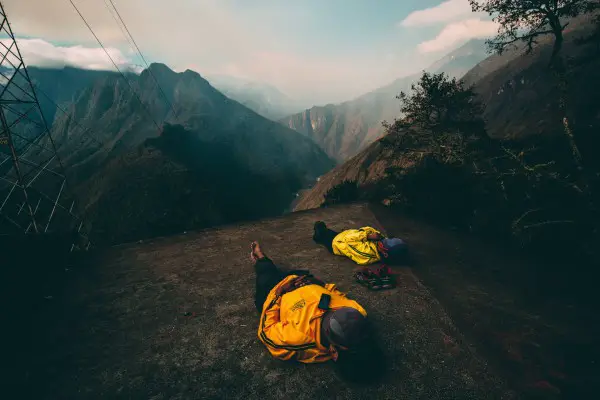
Downsides include less protection from the elements, less protection, from bugs, insects, and animals, and less privacy. Tents aren’t going to stop a bear or a mountain lion from getting you, but they will stop scorpions, snakes, and fire ants from getting to you. Without a tent, you’ll be vulnerable to these small creatures.
Also, tents can’t stop trees from falling on you, but they will stop the rain and wind from hitting you. To keep dry on rainy nights, you may find that you need to bring a waterproof sleeping bag for the ground and a tarp to put up over the top of you while you sleep.
Bivy Camping
Bivy camping allows you to ditch the tent and instead keep safe from the elements in what is known as a bivy sack, otherwise known as a bivouac shelter. This shelter is just large enough to accommodate a person and their sleeping bag inside of it. It’s shaped like a sleeping bag and features a small circular opening that a person can crawl in and out of.
Here is an example of what a bivy sack looks like.
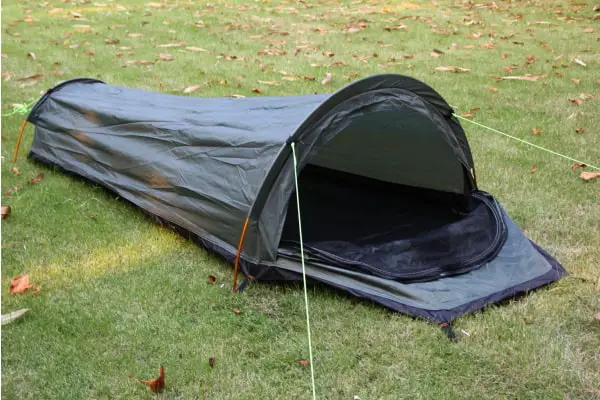
Click here to see why this bivy sack was rated Amazon’s #1 New Release in Camping Bivy Sacks.
The main benefit of bivy camping is that you don’t have to carry a tent. This means you don’t have to worry about stakes and guy lines.
You also don’t have to worry about the additional weight and space that comes with carrying a tent. Unlike cowboy camping, however, you do get some protection from the wind, the rain, bugs, insects, and even small animals. Sure, a snake could bite you through the bivy sack, but at least it can’t crawl into bed with you.
Discover the secret to avoiding snakes while camping on my post titled, “How to Avoid Snakes While Camping“.
The main disadvantage of bivy camping is that you don’t get much shelter from it. You won’t be able to stow your gear inside of a bivy sack like you would be able to do with a tent. Also, if the weather gets bad, you won’t be able to hang out in it as it really only has enough space for you to lie down in.
Bushcraft Camping
Bushcraft camping consists of camping that utilizes the surrounding areas to create a shelter. With this type of camping, you’ll use tree branches, dirt, rocks, and anything else you can get your hands on to make your own little home in the woods.
Your location, as well as your bushcraft skills, will determine how well you get to sleep each night. Some people associate this type of camping to the survivalist movement and they feel that you need to be some sort of ex-soldier or hardcore prepper to successfully engage in it.
Luckily, this simply isn’t true. In fact, this type of camping can be a lot of fun and people of all ages and backgrounds can participate in it.
Here is the introduction video from one of my favorite bushcrafting couples that I think highlights this fact. The video is only 2 minutes long, but watch it all the way through and you’ll get a feel for what bushcraft camping is all about.
The major upside to bushcraft camping for me is that it’s fun. It’s basically like fort-building for adults, and I love the fact that it relies on your skills so each time you go out on a bushcrafting adventure, you get better and better at it.
There is a huge downside to this type of camping too though. Elaborate bushcraft campsites are not very environmentally friendly and they certainly do not fall under leave-no-trace rules. You won’t want to cut down tree branches or dig deep trenches on public lands. Also, if you do decide to do this type of camping on private land, be sure to ask the landowner what you can and cannot do before you start altering his or her property.
Covered Wagon Camping
Covered wagon camping is another niche form of camping that still relies on a tent-like cover but offers a solid floor that is elevated off the ground. This type of camping emulates the covered wagons that early settlers and animal herders used when traveling across the country or with their flock.
A covered wagon can be rented at boutique campgrounds. These wagons can often be filled with amenities like wood stoves, gas lights, and kitchen supplies.
You can even build your own covered wagon to go camping in. These types of campers aren’t very difficult to create as you basically just need a wooden box on a trailer with some poles and a large piece of canvass or tent material to go on top.
Here is my favorite DIY covered wagon camper. It was built to pop-up and it even has a solid door.
The benefit of this type of camping is that you have more space for amenities than you would have if you just had a tent. Also, you’re up off the ground so you avoid some of the issues that come with that.
The downside to this type of camping is that you lose a lot of mobility and in the end, you’re still basically sleeping inside of a tent. You won’t have a lot of protection from people or animals and you’ll be more vulnerable to the wind and the rain.
Yurt Camping
A yurt is similar to a tent in that it has a canvass cover. However, it also has a lattice framework and a solid wood floor that provides rigidity to the entire structure. This makes it more solid than a standard tent and gives you more protection from animals, people, and the elements. Typically, the yurt will also have a door that locks, so you’ll be able to keep your valuables reasonably safe at your campsite.
Many state and national parks offer yurt campsites. They’re usually quite big and can often sleep more than some of the cabins that these parks have to offer.
When you rent a yurt, you’ll usually have a bed, cooking supplies, and some small furniture. Depending on the location, you may also get more modern equipment to use like stoves, microwaves, and fridges. These modern yurts will also offer electricity which comes with heating.
Yurt camping prices at state parks can vary but I’ve noticed that they generally go for prices between $40.00 and $100.00 a night. This isn’t a bad price for people looking to be as close to nature as possible without having to pay for a modern cabin.
Cabin Camping
Did you know that many campgrounds have both modern and rustic cabins that you can rent? These cabins can be quite extravagant or they can be quite spartan in nature. The more amenities the cabin has to offer, the more money you’ll pay.
The big advantage of cabin camping is that you can do it all year long. In some state parks, the tent sites will not be available in the winter, but the cabins and cottages will be. These cabins will offer electricity and heat, so you’ll be able to get a good night’s sleep before heading out to the beautiful snow-covered hiking and snowshoeing trails in the morning.
Often-times, the cabins found in state parks will not offer modern entertainment like televisions and Internet connections. They may not offer any linens either, so you’ll want to bring your own bedding with you. I’d recommend you make life easy and just bring a pillow and a good sleeping bag.
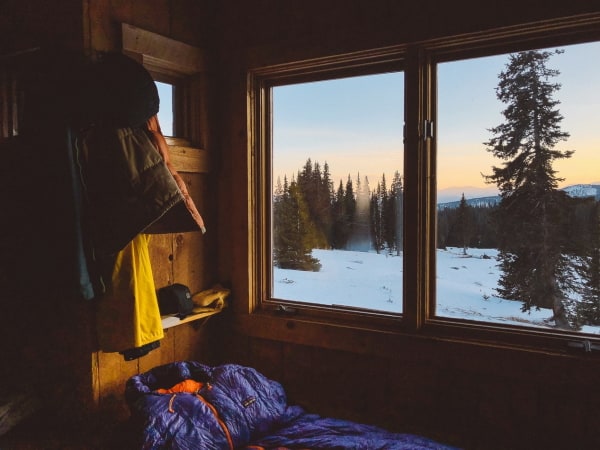
RV Camping
You don’t have to own an RV to go RV camping. Some campgrounds will let you rent RVs within their campground. I learned this first-hand when I was a child and my parents rented one to see if we’d like it.
If you’re thinking about buying an RV, you might want to do the same. Our family did like it and my parents ended up buying one eventually. However, if we hadn’t liked it, we would have saved ourselves a lot of money by learning that before they bought it.
You don’t have to rent one on-site either. Some companies like RVShare.com let you rent motorhomes and campers from other people. Rent from this site and you can drive the camper to any destination you choose. This option is great for people looking to spend a fun weekend camping without having to deal with all the inconveniences that come with sleeping in a tent.
While renting can be costly, it’s often much cheaper than buying a camper of your own. Also, it gives you the opportunity to try out a multitude of different campers before you decide to buy one of your own.
Teardrop Camper Camping
A teardrop camper is a perfect compromise between sleeping in a tent or sleeping in an RV. With a teardrop camper, you’ll have a comfortable bed and a climate-controlled room to call home at night, but you won’t have to tow anything too large behind you.
On top of this, you’ll be able to set up camp in parking lots along the way. While places like truck stops and Walmarts generally frown upon people setting up tents in their parking lot, they usually won’t have a problem with someone setting up a small teardrop trailer for the night.
The downside to the teardrop trailer, of course, is that you won’t have a bathroom or even room to stand up inside. This could be a problem for campers with mobility issues or folks who need easy access to a nice bathroom.
Final Thoughts
I think tent camping is great, but it isn’t for everyone. If you or someone you love doesn’t like tent camping, give one of these tent camping alternatives a try. Do so and you might just find that you like camping more than you thought.

